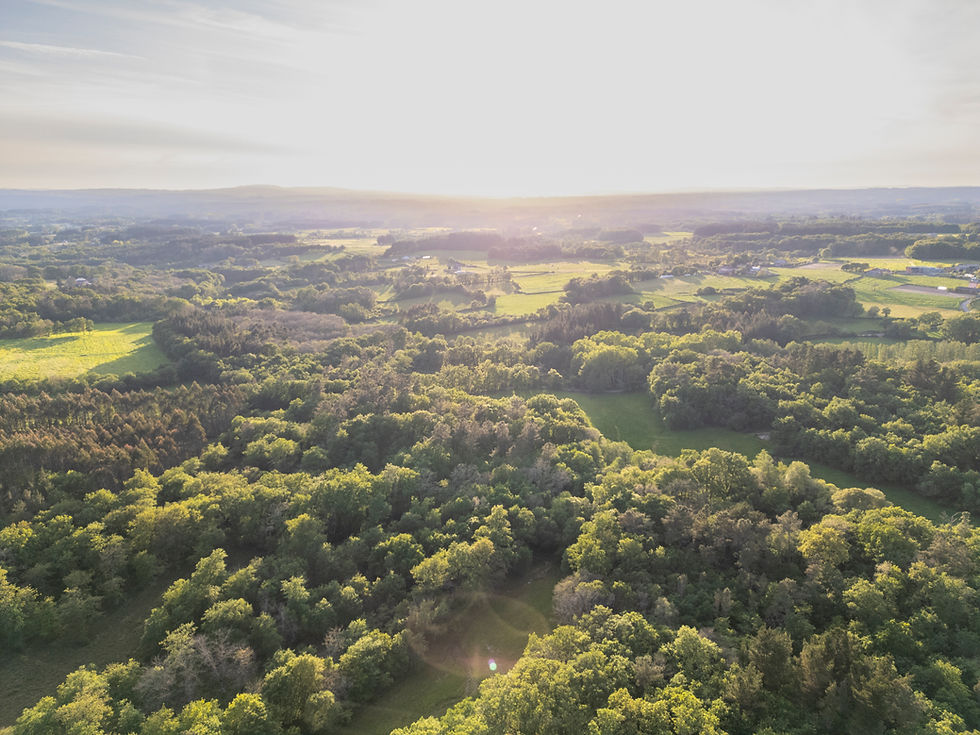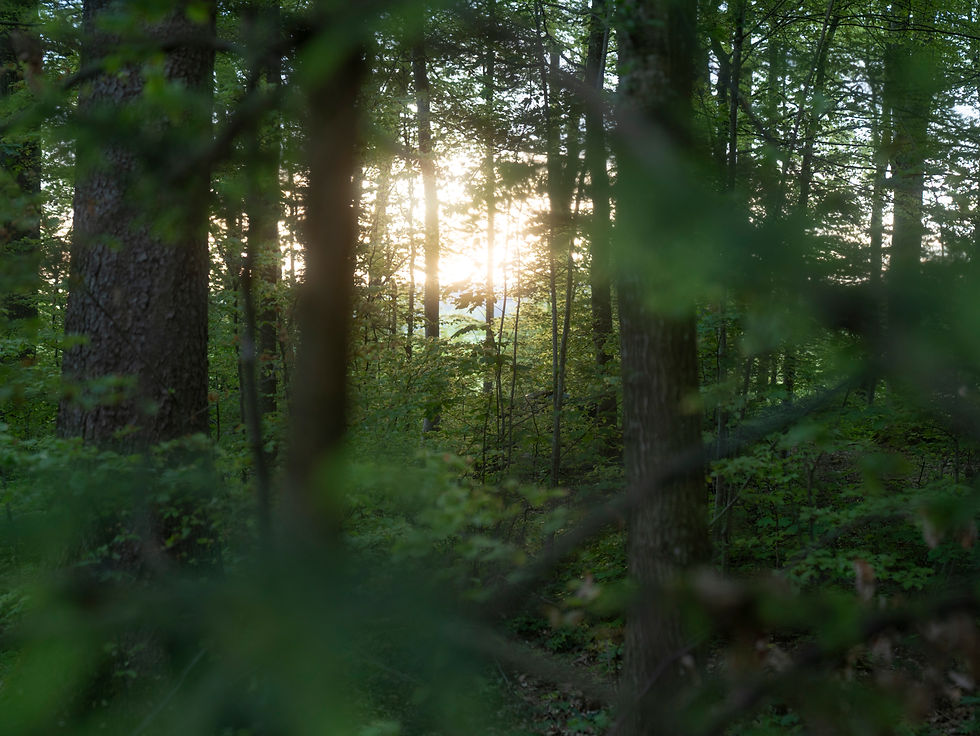
EDITORIAL


What is the future of timber?
We set out with a list of over 200 people and organisations we wanted to speak to. Influencers and innovators spanning the breadth of the timber supply chain. As a business embedded in this value-chain we wanted to understand from others what they think the current and future reality is for timber and trees. We wanted to reach beyond our own preconceptions. We wanted to help those in the built environment to understand the realities of timber growing and those in silviculture to understand how timber is used.
We began at the edges, looking at radical realism: people pushing the boundaries in experimentation, innovation and commercial risk taking. So many passionate researchers and entrepreneurs in businesses and institutions of all sizes. But we can’t get away from the fact that the timber value-chain is made up of a few global enterprises and very large numbers of small businesses which makes substantial sector-wide development difficult. At the same time, climate and global economics, the need for more timber and for better forest management, make the need for radical innovation even more important. How we accelerate R&D within this context is perhaps the most important question that we need to collectively address.


There seems to be both opportunity and tension in the array of species that make up “timber”. We found forestry practices are changing fast in response to changes in climate, the prevalence of disease and the need for more timber. In many places silviculture becomes more complex: more species in a greater range of sizes to create healthy ecologies. Professionals in construction will have to think about their responsibility to the forest and how they adapt what they demand to what is best for the forest.


“The challenge will be to create demand for the mixed forest that we will have more and more of in the future. That we, who plant the trees in the forest, also use them for as long as possible afterwards.”
Jan Knippers, ITKE University of Stuttgart
The research and innovation needed to make best use of the diversified palette of species cannot be underestimated. The beauty of timber, and its challenge, is its anisotropic nature. Every landscape, every forest, every species, every piece of timber will be slightly different. Our collective challenge as foresters and construction specialists is to find a way of harnessing this within a sector built on regularity of material.

This investigation of species led us down a path to bioregional approaches which we think will become increasingly important. Digital tools and advancements in forestry and timber processing, like the robotics in Stuttgart, support smaller-scale, efficient manufacturing that makes bioregionalism possible. In Galicia there was a community and political drive to use what is locally available, for Vastern Timber and Pollmeier an economic decision. As climate change unpredictably affects forests, flexibility in supply chains will become critical. The question remains: will centralised systems adapt better to these changes, or is the flexibility of bioregionalism the solution?

These questions around research, development and future forests pushed us to question how investment decisions are made in the value-chain. Nothing happens without investment. For some there is an investment pull where investors dictate responses. At Tilhill, investors are generally focussed on what will provide the best return on investment (ROI) whilst the foresters would like to plant greater mixes than the spruce that rules ROI in the UK. It requires silvicultural innovation in planting stock and management technique to put mixed species silviculture on a level footing.
At the Cromwell group the investment push into timber construction has been driven by Pertti Vanhanen and has led to the introduction of a billion dollar investment fund that they now need to sell to investors happy to invest in an area they may be unfamiliar with. This has become an exercise in education in market segments unfamiliar with the timber value-chain.

Within the processing chain there is a need at Blumer Lehmann, Pollmeier and others to develop better processes that not only create efficiency but allow them to sell higher value components rather than intermediate materials. In many cases this in turn has led to investment in exploring new species and the technology needed to work with mixed properties of different timbers.
It makes us think hard about the dynamics we have been seeing throughout our travels. We have sought out those people we think are at the edge of the possible, who point to the future, who, when we talk to those in investment, may seem niche and uninvestable on a large scale. How do we bridge these gaps to create mainstream change? Raising capital will be vital for innovation to become reality.

It’s easy to talk about responsibility to the environment, to communities, and to the economy but difficult to say what this means or put it into practice. Yet everyone we spoke to has a focus, a passion, and questions their responsibility to the value-chain they are part of.
For processors like Finsa the direct action of being able to work with 40,000 small owners allows them to have some real responsibility in ensuring the continuation of rural communities that supply them. Using digital technology enables them to do this in a cost effective way that also ensures environmental responsibility through certification.

In the case of Jean-Jacques, responsibility is about the long term resilience of forests which is as much about the education of the next generation of foresters as about the silviculture to future-proof the diversity in the forest. For people like Double Helix and NatureMetrics it's about providing the mechanisms for the value-chain to be more responsible.

Talking about responsibility is easy, action is harder. Who takes responsibility for ethical responsibility across the value-chain? Who pays for it, is the idea of responsibility flexible enough to cope with rapid changes in the forest and the built environment?


"Should we actually be growing trees to provide material for the end user, like architects, engineers? The choice of that route would, I suspect, be a quite, short sighted, if not dangerous route to, to take... the rules shouldn't be set by the end user. There should be a discussion between the forest and the end user. But at the same time, there should be an anticipation and more, flexibility in the choice of tree" species.
Chris Sadd, Forester Hooke Park














HOME
RADICAL
REALISM
BIOREGIONALISM
RESPONSIBILITY
SPECIES
INVESTMENT
EDITORIAL
Copyright © Evolving Forests 2024
Website by Southstik Studio
If you're inspired, challenged by, or curious about any of the themes or discussions the project touches on, we urge you to get in touch. This remains an ongoing conversation, not a static piece of work
supported by
funded by
a project by





JOIN US AS WE EXPLORE THE FUTURE OF TIMBER
WHERE REALITY AND BOUNDARY-PUSHING COLLIDE
EXPLORING OPPORTUNITIES IN LOCALISED TIMBER SUPPLY CHAIN
QUESTIONING THE BOUNDARIES OF SUPPLY CHAIN DUTIES
RESPONSES TO CURRENT AND FUTURE TIMBER SPECIES
MONEY AND TREES
PROJECT SUMMARY
What is the future of timber ?
© 2035 Evolving Forests. Created by Southstik Studio
A project by Evolving Forests
Funded by Built By Nature
Supported by Forestry Commission, Scottish Forestry Trust, Egger






If you're inspired, challenged by, or curious about any of the themes or discussions the project touches on, we urge you to get in touch. This remains an ongoing conversation, not a static piece of work
a project by
funded by
supported by














HOME
RADICAL
REALISM
BIOREGIONALISM
RESPONSIBILITY
SPECIES
INVESTMENT
EDITORIAL
Copyright © Evolving Forests 2024
Website by Southstik Studio
If you're inspired, challenged by, or curious about any of the themes or discussions the project touches on, we urge you to get in touch. This remains an ongoing conversation, not a static piece of work
supported by
funded by
a project by





JOIN US AS WE EXPLORE THE FUTURE OF TIMBER
WHERE REALITY AND BOUNDARY-PUSHING COLLIDE
EXPLORING OPPORTUNITIES IN LOCALISED TIMBER SUPPLY CHAIN
MONEY AND TREES
RESPONSES TO CURRENT AND FUTURE TIMBER SPECIES
MONEY AND TREES
A SUMMARY OF SOME THINGS













